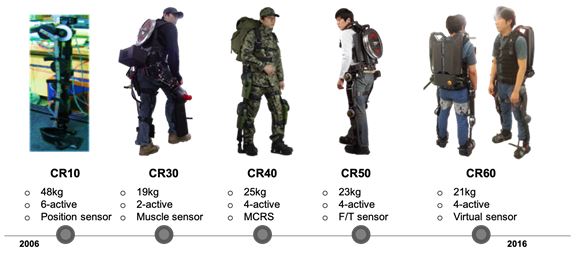Introduced as a “Young Robot Engineer” in an April 27 iRobot News article
In the “Young Robot Engineer” corner, in which the Korea Robotics Society and the iRobot News jointly discover and introduce young robotics engineers who will lead Korea’s future robotics industry, Hanyang University Professor Kim Wan-soo was introduced.
Professor Kim’s major research field is human-robot interactions using cooperative or exoskeleton robots. In particular, to provide physical support for workers by working with robots, he is researching human-robot interaction modeling comprised of a closed-loop and a control framework that uses such a system.

The research content will focus on human-centered human-robot cooperation with ergonomic factors added and the development of a control framework using cooperative robots or mobile manipulators.
Ergonomics is a scientific approach to enhance the user’s convenience through effective systems and environmental structures that analyze risk elements, such as the worker’s posture in dangerous environments like factories or repetitive loading, and to prevent muscular-skeletal diseases. Ergonomic collaborative control is a rather new topic in the robotics field but is gradually being recognized as a significant factor for sustainable collaboration between humans and robots, with similar studies on the rise as well.

He also talked about his paper for his doctoral degree from Hanyang University, “Human Synchronized Gait Control of the HEXAR-CR50 to Augment Lower Body Strength Based on the Human-Robot Interaction Force.” This is an integrated paper on the Hanyang Exoskeleton Assistive Robot (HEXAR), which started from the exoskeleton robotics research under Hanyang Graduate School High-Tech Robot Research Center Professor Han Chang-soo from 2006 to 2015. First, the contents include the human-centered exoskeleton robot, interface design technology, human-robot cooperative modeling, and control strategy technology development. Next is the modeling and control strategy of mutual interactions such as the movement control methods of robots that recognizes human movement intentions and complies with those intentions to enable humans and robots to perform the same work motions together.

According to Professor Kim, the fact that humans are included in the robot’s control loop in the human-robot collaboration research is the most difficult but attractive part. He stated his goal to develop collaborative robots that are more familiar and easy to use in order to make robots be recognized as cooperation partners rather than as threats for human work positions, saying “Although conducting the research and verifying its effect is very complicated, I feel that it is the closest research field with a goal of application to daily life.”
Meanwhile, Professor Kim graduated from Hanyang University ERICA's Department of Mechanical Engineering, entered Hanyang University Graduate School combined master’s and doctorate program in March 2008, and received his doctoral degree in Mechanical Engineering in February 2015. During his undergraduate years, he worked as an intern in the Hanyang University CIM & Robotics Lab from August 2006 to February 2008 and participated in the four-footed robot development and exoskeleton robot development as an assistant researcher from March 2008 to February 2015. After receiving his doctoral degree, he worked as a post-doctoral researcher in the Hanyang University ERICA Campus Research Institute of Engineering & Technology from March 2015 to February 2016 and in the “Istituto Italiano di Tecnologia (IIT)” for 5 years from May 2016 to February 20201. Since March, this year, he has been the assistant professor in the Hanyang University ERICA Campus Department of Robot Engineering.

